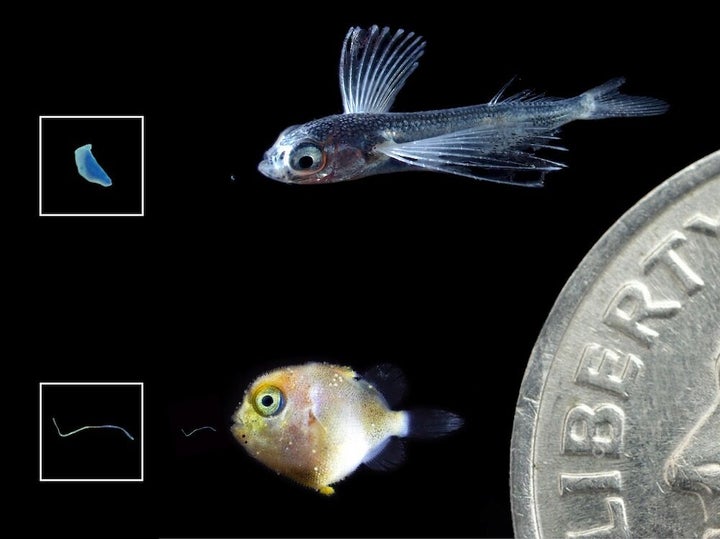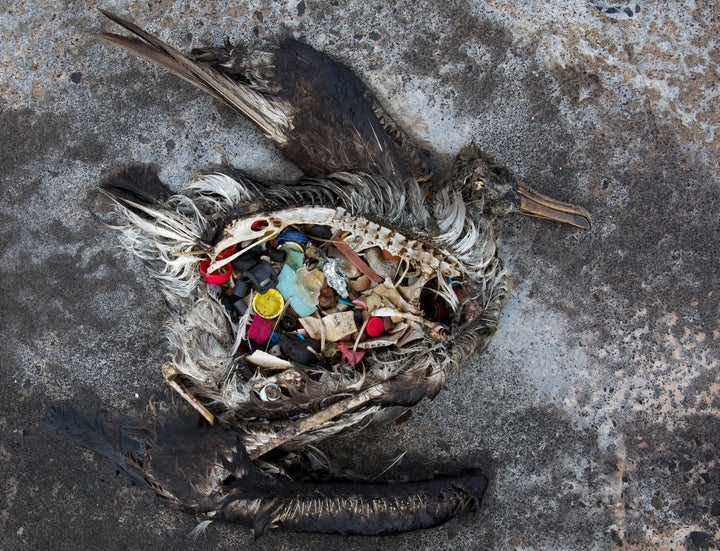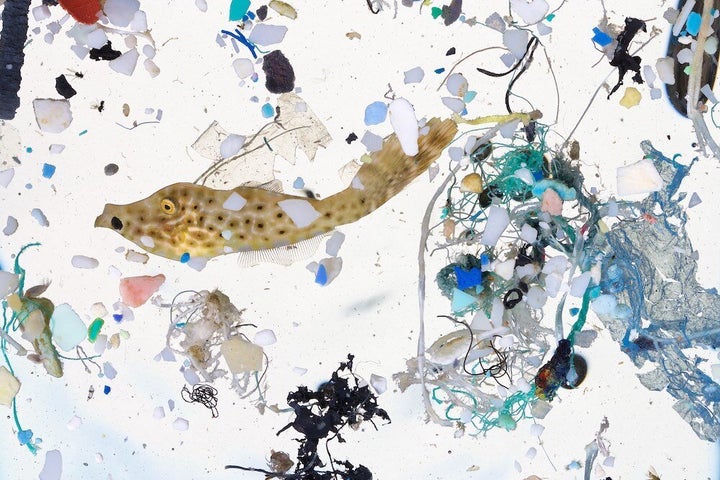Researchers studying baby fish off the coast of Hawaii announced a troubling discovery on Monday.
Minuscule plastic particles are clustering at the ocean’s surface and mixing with critical sources of the hatchlings’ food. In these important feeding areas, plastics outnumber baby fish 7 to 1, researchers found. Some of the larval fish are eating these particles, which scientists believe could hurt their chances of survival and threaten the delicate food web that supports larger ocean creatures and humans.
“We were shocked to find that so many of our [water] samples were dominated by plastics,” Jonathan Whitney, who co-led the study, said in a press release.
The researchers didn’t set out to report on plastics, said Whitney, a marine ecologist for the Joint Institute for Marine and Atmospheric Research in Honolulu. Rather, they intended to study the relatively unknown habits of baby fish across several species — including swordfish, flying fish and mahi-mahi — in their first days and weeks of life. But as he and his team began taking samples, trawling the ocean surface with a floating net, “we were finding more plastics than fish,” Whitney told HuffPost.
The study, published in the journal Proceedings of the National Academy of Sciences, focused on surface slicks near Hawaii Island. Slicks are slivers of ocean that can contain large amounts of plankton, a primary food source for larval fish. Wave convergences, ocean currents and variations in the seafloor herd plankton into the slicks, but these same forces also accumulate plastic particles. Slicks, which cover less than 10% of Hawaii Island’s coastal waters, can contain a huge amount of larval fish, far more than surrounding waters. The slicks studied also had higher concentrations of plastics than other areas, the researchers found.
Most baby fish that feed in these floating buffets become bigger, faster and more developed than fish that grow up in surrounding waters, the researchers wrote. But the prevalence of plastic trash in the slicks might also create problems for growing fish.
The researchers found that the slicks contained roughly 40% more prey-sized plastics than surrounding waters. The team dissected 658 larval fish and noted 8.6% had ingested plastics, compared with only 3.7% from surrounding waters. Though the study noted more plankton than plastic both in the slicks and in ambient waters, the ratio of plastic to plankton was 60 times higher inside the slicks.
It’s estimated that 8 million metric tons of plastics are dumped into the ocean every year, breaking into smaller pieces over time until they’re nearly invisible to the human eye. These particles, called microplastics, are less than 5 millimeters in size, not much bigger than plankton. Many of the plastic samples recovered in the Hawaii study came from industrial fishing equipment and single-use items like shopping bags and water bottles.

Baby fish are particularly vulnerable to harm because they hatch at such an early stage of their life cycle, Whitney told HuffPost. Their organs, muscles and immune systems aren’t completely developed.
“If they’re eating plastics at their first critical meal, they’re filling their bellies with plastics instead of plankton,” said Whitney. Having a belly full of plastic might make them think they’re full, leading eventually to starvation.
Fully grown whales and birds have been known to starve to death after consuming large amounts of indigestible plastic.
Eating plastic can cause intestinal blockages, toxin accumulation and malnutrition in adult fish, but little research exists on the effects in larval fish.
“Any stressor will likely have more of an impact on early life stages than later life stages,” Susanne Brander, a toxicologist at Oregon State University studying the effects of plastics on fish growth, told National Geographic earlier this year.
More research is needed to determine what happens after larval fish ingest plastic, said Jamison Gove, who co-led the Hawaii study. Still, he’s worried about what he’s seen so far.
“Hundreds of millions of people around the Pacific Ocean rely on near-shore fisheries as part of their primary source of protein,” said Gove, a research oceanographer for the National Oceanic and Atmospheric Administration. Larger fish and birds also rely on baby fish as a food source, Gove added. If plastic particles are spreading through the food chain, he wants to know whether they’re doing damage along the way.

This is not the first study to examine larval fish and plastic consumption. A Swedish report published in 2016 examined the effects of plastic particles on perch larvae and found that some of the fish actually seemed to prefer eating the plastic. Baby fish that were exposed to lots of plastic particles were slower and more vulnerable to predators, the report found.
Another 2016 study determined that many marine animals might be eating plastic because it smells like food. They’re essentially being tricked, said lead study author Matthew Savoca, now a postdoctoral researcher with Hopkins Marine Station at Stanford University. When their sensory systems tell them something smells edible, it’s supposed to be OK to eat. The animals aren’t equipped to deal with this relatively new threat, he told HuffPost.
Savoca, who was not involved in the Hawaii study, added that larval fish in areas with high concentrations of ocean plastics are being duped in a similar way. They’re “evolutionarily honed” to visit surface slicks, where there’s supposed to be an abundance of food, he told HuffPost. For millions of years they haven’t had to worry about non-nutritious prey-sized particles mixing with their meals — this threat has appeared only in the last few decades.

“What humans do affects the entire planet, even places we never see and are nowhere near,” Savoca said.
Gove said his work in the Hawaii fish nurseries has made him rethink his relationship to single-use plastics. But, he added with frustration, it’s practically impossible to avoid the stuff.
“It’s harder than it should be to live a life that’s single-use plastic free,” said Gove.
Gove also told HuffPost that plastics are far from the only danger looming over fish populations and marine ecosystems.
“Climate change is one of the greatest single threats to biodiversity and our planet’s ecosystems,” he said.
Overfishing and habitat loss also harm fish populations, Gove added.
If it matters to you, it matters to us. Support HuffPost’s journalism here. For more content and to be part of the “This New World” community, follow our Facebook page.
HuffPost’s “This New World” series is funded by Partners for a New Economy and the Kendeda Fund. All content is editorially independent, with no influence or input from the foundations. If you have an idea or tip for the editorial series, send an email to thisnewworld@huffpost.com.
